He charged into battle without a weapon, armed only with faith, guts, and a first-aid kit. Desmond Doss defied logic, bullets, and every war movie cliché. His story isn’t just heroic—it’s mind-blowingly impossible. Strap in for the unarmed saga of the man who saved lives like it was a sport.
Born With a Bible and Unshakable Nerves

Desmond Doss was born in 1919 in Lynchburg, Virginia, in the midst of chaos. He wasn’t born holding a Bible, but he might as well have been clutching Exodus emotionally.
Raised as a Seventh-day Adventist, Desmond was basically trained from birth to treat war like it was a house party hosted by Satan. He took “Thou shalt not kill” more seriously than a toddler takes nap time.
While most kids were chasing frogs or pretending to be pirates, Desmond was busy developing a moral code so intense it could guilt-trip a grizzly bear into vegetarianism. Dude had values—weapon-grade values.
The Origin of a Peaceful Warrior

Desmond’s dad was a carpenter, so our boy probably learned early that hammers hurt and nails don’t apologize. This might explain why he didn’t vibe with violence.
One day, after witnessing a drunken domestic scuffle involving a gun, Desmond decided firearms weren’t his thing. Most kids would be traumatized—Desmond got spiritually swole instead.
This moment stuck with him like guilt on a Catholic. It cemented his belief that killing, even for Uncle Sam, just wasn’t his path. Spoiler alert: he found a very dramatic detour.
From Factory Floor to Frontline Intentions

Before he was the Army’s favorite guilt trip, Doss worked in a shipyard, slapping metal and pretending rivets were thrilling. It wasn’t glamorous, but it paid the tithes.
He could’ve stayed there and avoided war entirely. Instead, he voluntarily enlisted because being confusingly noble was how he rolled. Pacifist? Yes. Draft-dodger? Absolutely not.
When asked why he joined, he basically said, “to heal, not to kill.” That’s the moral equivalent of walking into a burning building with aloe vera and optimism.
Enlistment Papers and Raised Eyebrows

When Desmond told the Army he’d like to join but, by the way, no guns, they probably thought he misread the pamphlet or was auditioning for a prank show.
He declared himself a conscientious objector but still wanted to serve. That’s like signing up for a cooking show and refusing to touch food. Bold strategy, Cotton.
They didn’t love it, but they let him in anyway, figuring he’d quit or get weirdly useful. They underestimated how aggressively wholesome this man would become.
Boot Camp: Where Kindness Is a Crime

Desmond’s time in basic training was less “team-building” and more “religious guy gets bullied by sweaty men with shaved heads.” He was mocked, cursed at, and maybe even used as a hat rack.
The other soldiers thought he was cowardly, which is hilarious in retrospect. They threw shoes at him, and he offered to polish them. It was spiritual judo.
Even with all the hazing, Desmond never fought back. Instead, he kept patching people up, quoting scripture, and being so annoyingly nice he should’ve come with a halo.
Sabbath Scandals and Army Confusion

Desmond also politely requested to observe the Sabbath. Yes, he wanted to rest on Saturdays… in the middle of war prep. Somewhere, a general popped a blood vessel.
He was told that war doesn’t pause for the weekend, but Desmond disagreed. So he worked harder the other six days to make up for it because guilt is cardio.
Eventually, the Army reluctantly let him have his Saturdays off, probably while muttering, “Fine, whatever, just don’t start a religious revival in the barracks.”
Rifle Rejection and a Whole Lot of Drama

The biggest scandal? Desmond refused to even touch a gun during training. That went over like a tofu burger at a Texas BBQ. People were not thrilled.
He was nearly court-martialed just for refusing to qualify with a rifle. His commanding officers thought he was trolling them. Turns out he was just that consistent.
He finally got permission to train without weapons. This was historic, but it also created bureaucratic chaos, which gave the Army a headache that would last until Okinawa.
Combat Medic: The Army’s Human Glue Stick

Eventually, someone had the galaxy-brain idea to make Desmond a medic. “You won’t fight? Fine, go patch the ones who do.” The irony was chef’s kiss.
Desmond took to it like a duck to holy water. He aced first aid, battlefield triage, and moral superiority in one swift montage of noble intent.
He didn’t just treat wounds. He prayed over them, sang to the injured, and probably blessed the bandages. At this point, even the skeptics were side-eyeing him with cautious respect.
Off to the Pacific Theatre—Spoiler: It’s Not a Broadway Show

Desmond got shipped to the Pacific, where the vibes were less tropical paradise and more “every inch is on fire.” Okinawa was calling. It wasn’t friendly.
He didn’t complain. He packed his Bible, some bandages, and enough optimism to fill a trench. Basically, he was a Disney character dropped into Saving Private Ryan.
He joined the 77th Infantry Division. The guys still weren’t sure about him, but at this point, they were hoping he didn’t start glowing or floating mid-battle.
Welcome to Hacksaw Ridge: Abandon All Hope, Ye Who Enter

Hacksaw Ridge wasn’t just a name. It was a vertical nightmare. Imagine climbing a cliff into enemy fire, then doing it again for fun—without a weapon. That was the Tuesday vibe.
Desmond went up with his unit, armed only with medical gear and divine conviction. Everyone else brought guns, but he brought gauze and gall.
The Japanese were not playing around. The battle was carnage incarnate. Desmond didn’t flinch. He zigzagged through bullets like a caffeinated squirrel in a minefield.
“Please Lord, Help Me Get One More”

As bullets whizzed past like angry bees on steroids, Desmond whispered a prayer: “Please Lord, help me get one more.” That line wasn’t poetic—it was his literal action plan.
Each time he saved a wounded soldier, he repeated the line like a spiritual to-do list with escalating difficulty. Meanwhile, everyone else was just trying not to explode.
He repeated that prayer for hours, dragging bodies across blood-soaked ground like a faith-powered forklift. The only thing more unkillable than him was his motivation.
Solo Rescue Mode: Activated

When his unit retreated, Desmond didn’t. He stayed behind—alone—on top of the ridge. Not because he got left behind, but because he refused to leave the injured behind.
He patched the wounded, dragged them to the edge, and lowered them down the cliff by rope. No fancy pulley system. No backup. Just grit and knots.
While most people use rope for camping or hostage situations, Desmond turned it into a medical evacuation highway. The only traffic jam was bodies getting saved too fast.
The Cliff of Miracles

He lowered man after man down a 400-foot cliff, looking like a haunted angel with a ropes course certification. The wounded were like, “Wait, I’m alive?!”
Imagine waking up halfway down a cliff, mid-air, being gently lowered by a guy who still smells like antiseptic and salvation. That’s a wild ride no one bought a ticket for.
No safety gear, no visibility, just Doss, a rope, and apparently, God’s direct supervision. OSHA would’ve fainted. But it worked—miraculously over 75 times.
The Skeptics Finally Shut Up

After Desmond saved their collective bacon, even the loudmouths in his unit had to admit the unarmed guy was kind of useful. Some even apologized, which hurt worse than shrapnel.
Suddenly, “Bible boy” became “our best hope.” The guy who once got mocked during training became the one everyone prayed would still be alive after each explosion.
Respect doesn’t usually grow in foxholes, but Doss fertilized that field with selflessness, pain tolerance, and a complete lack of ego. The haters became believers—mostly out of sheer awe.
Grenade? No Problem, I’ll Just Absorb It

During a later battle, Desmond tried to kick a grenade away from his buddies. He didn’t kick it far enough. So, yes, it exploded. Guess who was still conscious?
Despite his body being a collection of pain, he crawled back to tend to others. Not away from the explosion—toward the wounded, because he had zero self-preservation instincts.
Instead of asking for help, he made a splint out of a rifle stock and crawled to safety. You know, rifle stock. The irony was so thick it needed stitches, too.
“Patch Others First,” He Said While Dying
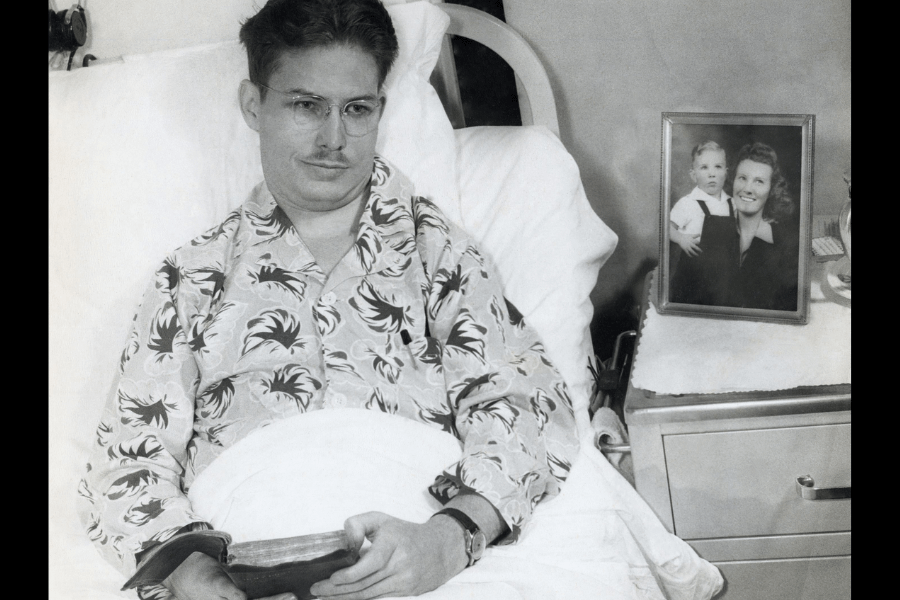
When medics finally found him, Desmond—full of holes and missing several functioning organs—told them to treat someone else first. That’s not bravery. That’s theological overachievement.
They tried to carry him off, but another sniper shot hit his arm. Did he scream? Nope. He just made sure someone else grabbed his Bible before the medevac.
Imagine being the medic at that moment. “Sir, you’ve been exploded and shot, what now?” And Desmond’s like, “Grab the Scriptures.” That’s next-level spiritual customer service.
Finally Medically Disqualified, Like a War-Saving Legend
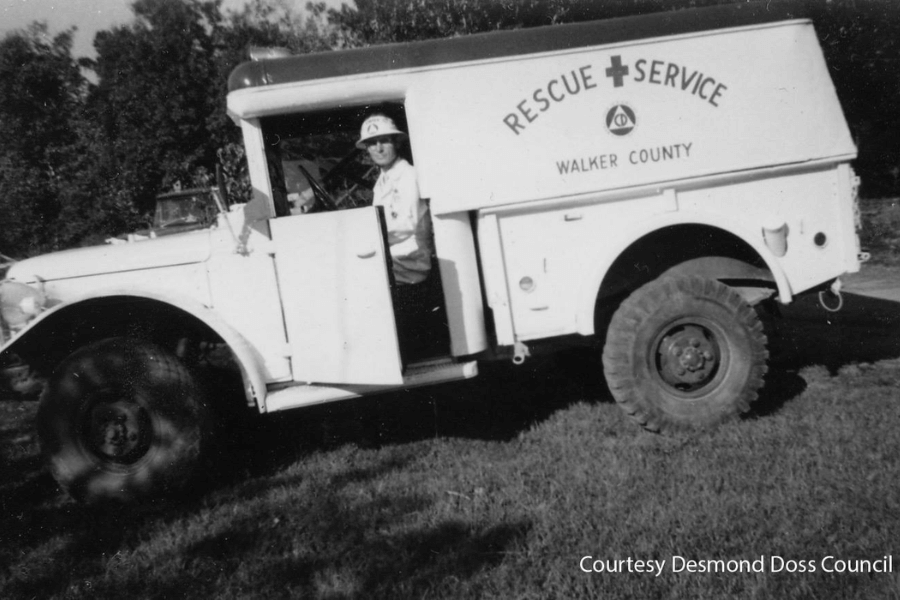
After surviving grenades, bullets, and bureaucratic disbelief, Desmond was finally too injured to keep serving. The Army basically said, “Okay, fine, go home, you weird miracle of a man.”
He had 17 pieces of shrapnel in him, a broken arm, and a chest full of humility. Doctors were probably baffled that he wasn’t dead or glowing.
Desmond didn’t complain. He retired quietly, like a war hero ninja. No press tour, no TikTok dance, just a deeply bruised saint heading home.
Medal of Honor Time, Baby
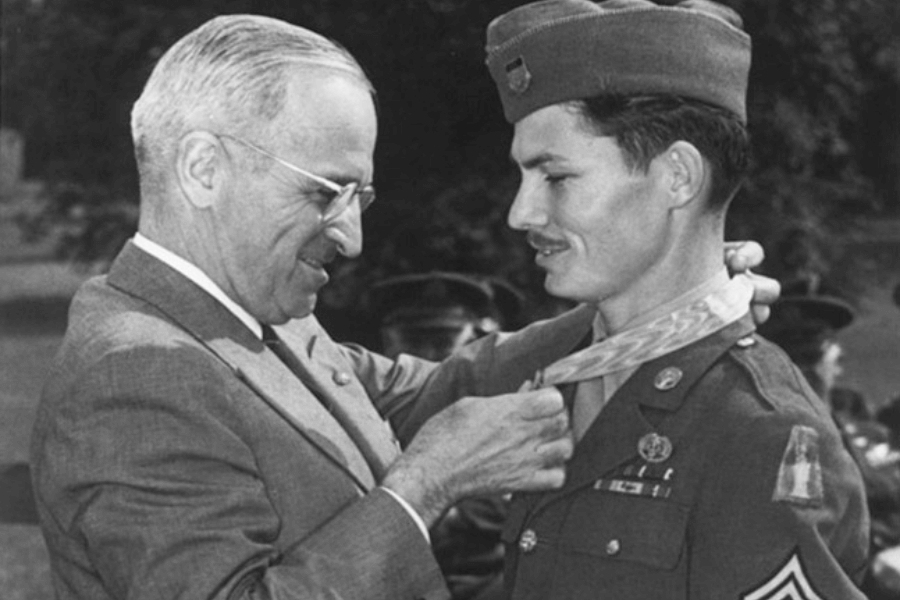
President Truman himself gave Desmond the Medal of Honor, probably resisting the urge to sob and yell, “HOW?! WHAT?! WHO DOES THAT?!”
Truman said it was a greater honor to present it than to receive it. Coming from a guy who literally dropped nuclear bombs, that’s a strong endorsement.
Desmond, of course, accepted it shyly, probably muttering something like, “Thanks, but the real honor is saving lives.” Classic Doss: allergic to the spotlight, addicted to mercy.
The Media Couldn’t Handle Him
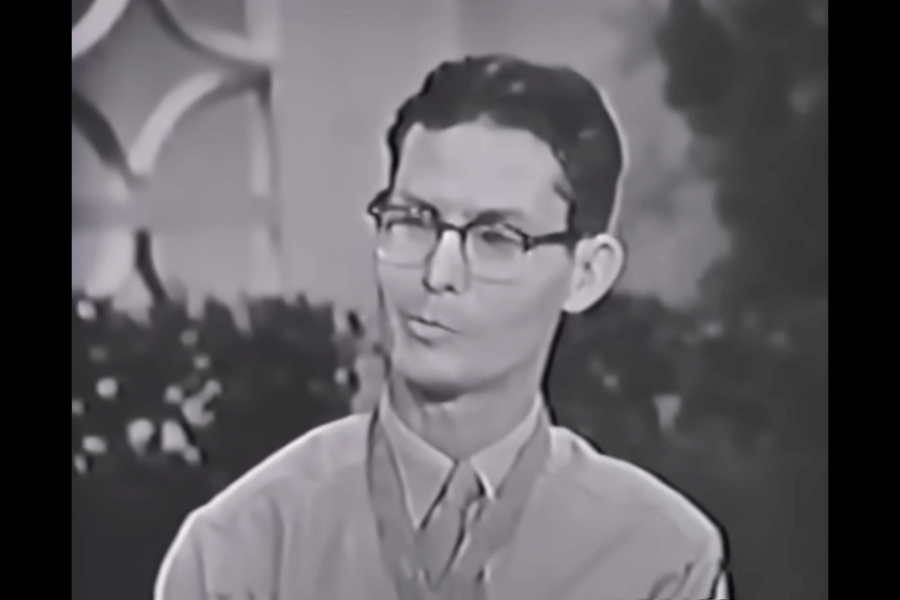
After the war, Desmond received some media attention, but not enough considering he had basically invented a new genre of war hero: the pacifist action figure.
Interviewers didn’t know what to make of him. “Wait—you fought in World War II, saved 75 people, and never fired a weapon?” It short-circuited their brains.
He gave some interviews, then faded into civilian life like a retired monk with PTSD. Honestly, the fact that he didn’t start a cult is a miracle on its own.
Hollywood Tried—He Declined
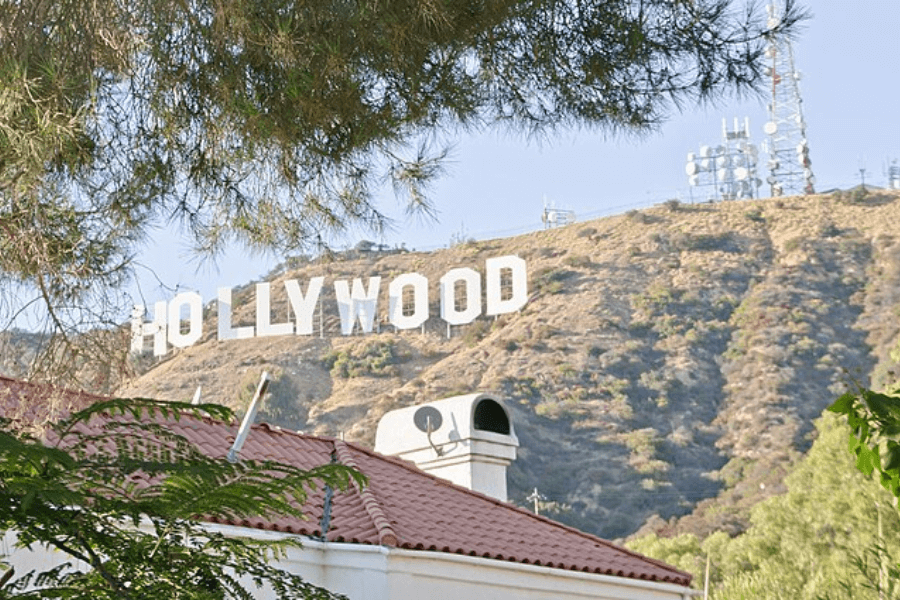
For years, studios begged to buy his story. Desmond said “no” more times than a toddler near a nap. He didn’t want them to mess it up with explosions and swearing.
He worried Hollywood would sensationalize the story. This, from the man who survived literal battlefields by being a walking contradiction in boots.
Eventually, he relented—but only when he was older, and only if they promised to keep it accurate. Thus began the long journey to Hacksaw Ridge: The Movie.
Hacksaw Ridge (The Movie): Now With Extra Heroism
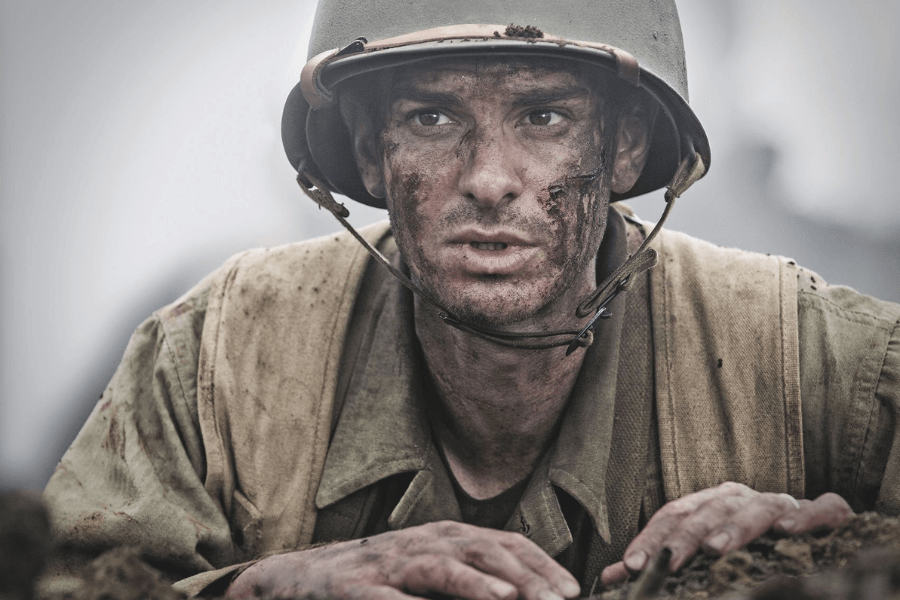
Mel Gibson eventually got the green light to direct Hacksaw Ridge, and let’s be honest, Desmond’s story practically screamed “Oscar bait with bonus morality.”
Andrew Garfield played Doss, probably needing daily naps from carrying the emotional weight of portraying a human miracle. Critics said it was “gritty.” Desmond probably called it “slightly dramatic.”
Despite his humility, Desmond approved the script. Barely. He made sure they didn’t turn him into a Rambo-Jesus hybrid. No slow-mo gunshots—just slow-mo bandaging and modesty.
Faith: The Other Weapon

While others packed ammo and grenades, Desmond brought Psalms and Philippians. His Bible was his shield. Not metaphorically—he actually clung to it like it deflected bullets.
He’d pray over the wounded while explosions happened like angry popcorn around him. Somehow, no one ever told him to shut up. Even atheists were like, “Cool, thanks.”
Desmond didn’t push religion on anyone. He just lived it so loudly that even the most skeptical soldiers were like, “Well, I guess God might be real.”
Marriage to Dorothy: Because Legends Also Fall in Love

Dorothy Schutte married Desmond in 1942, clearly not phased by the whole “I’m going to war without a gun” plan. Either that or she was into extreme husbanding.
They wrote sweet letters while he was off dodging death and denying weaponry. She even helped him recover when he came home as a human pin cushion.
Desmond once said Dorothy was his strength, which is cute until you realize his strength also involved crawling with a blown-up leg for five hours. So she must’ve been immense.
Raising a Kid the Doss Way
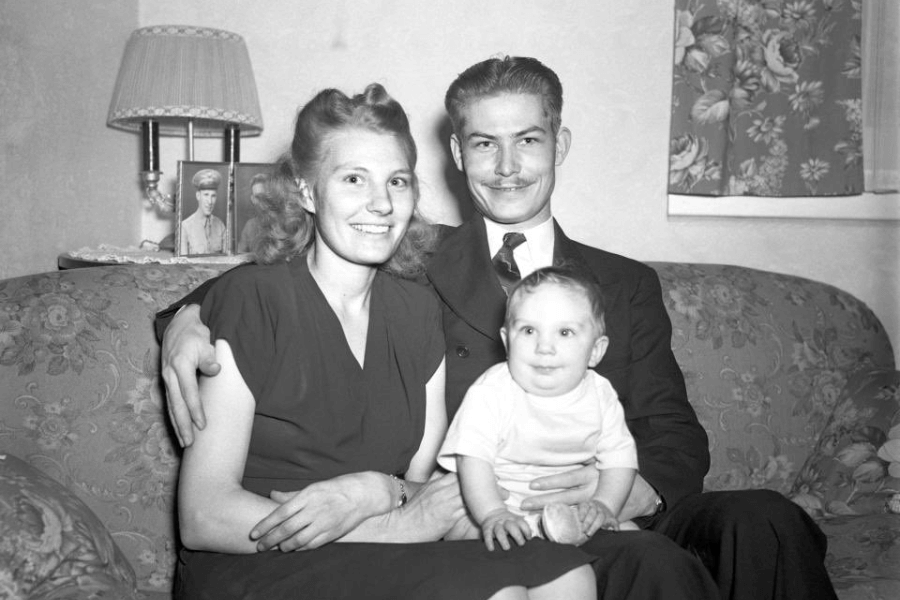
Desmond and Dorothy had one son, Desmond Jr., who grew up in the shadow of a man who made angels feel underqualified. No pressure, kid.
Junior said his dad was incredibly kind but didn’t talk much about the war. Probably because “I saved 75 guys with rope” doesn’t really segue well into bedtime stories.
Instead, Desmond taught by example—service, sacrifice, and how to hold a Bible like a holy light saber. There was no ego, just decency with strong side effects.
PTSD? Obviously. But Quietly Handled
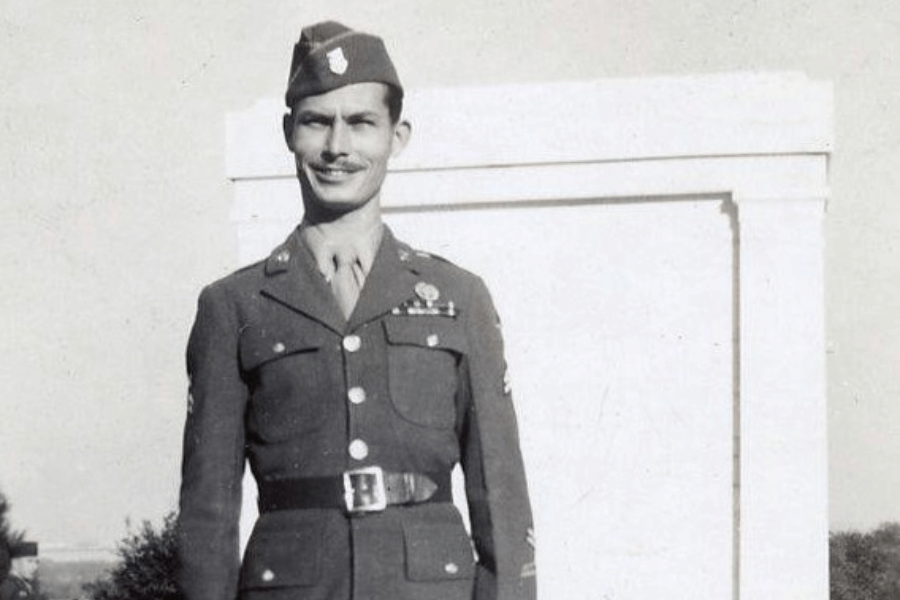
Though he never admitted it loudly, Desmond clearly dealt with trauma. You don’t crawl through body parts for fun. But true to form, he carried it with zero complaints.
Nightmares? Probably. Panic, Definitely. But Desmond faced it the same way he faced enemy fire—head-on, with no backup and an extra dose of prayer.
Instead of letting it wreck him, he poured his energy into helping others, living modestly, and staying as far away from spotlights as humanly possible.
Health Problems: The “Thank You for Your Service” Gift Bag
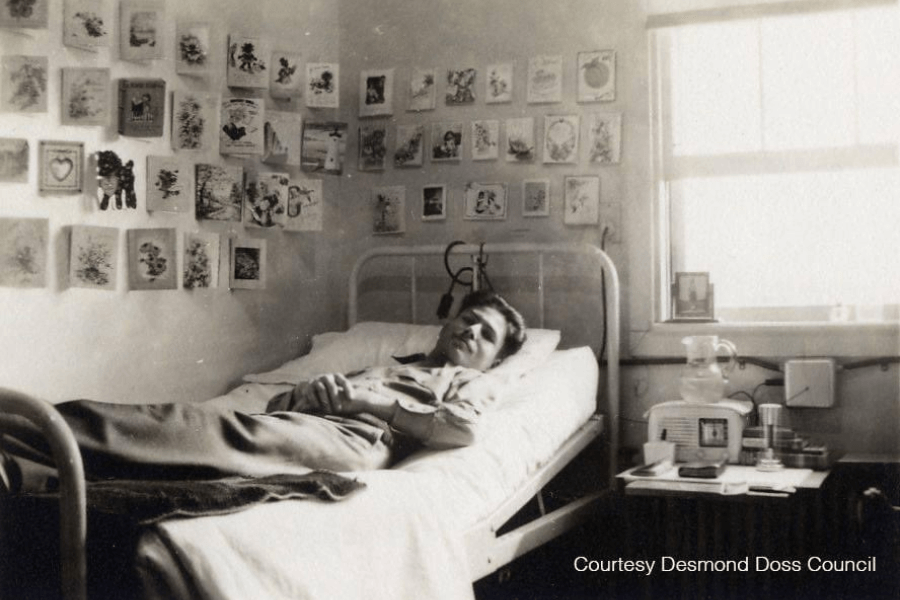
Desmond’s war injuries aged like milk. Shrapnel damage, tuberculosis, and more surgeries than a celebrity face-lift montage—he paid physically for every life he saved.
He spent years in and out of hospitals. At one point, he even lost a lung and five ribs. It’s like his body made a checklist of “What can we ruin today?”
And still, he smiled. Still grateful. Because nothing says “indestructible” like a guy who saved a platoon and then beat tuberculosis for dessert.
Veterans Admired Him, Even the Trigger-Happy Ones
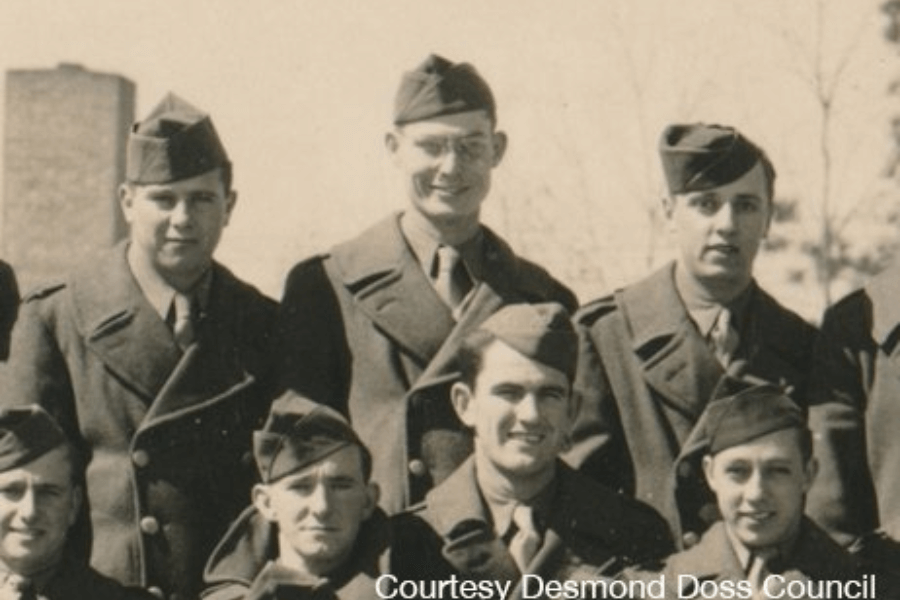
Despite being the unarmed oddball, Desmond became a legend among veterans. Marines, infantry, even the brass—everyone had to admit the man had celestial grit.
Many hardcore soldiers confessed they would’ve died without him. And those are guys who usually only admit feelings after whiskey and thunderstorms.
He didn’t brag. He didn’t wave flags. He just existed—quietly—and made every other vet feel a little underdressed in the courage department.
The Church’s Poster Child (Whether He Wanted It or Not)
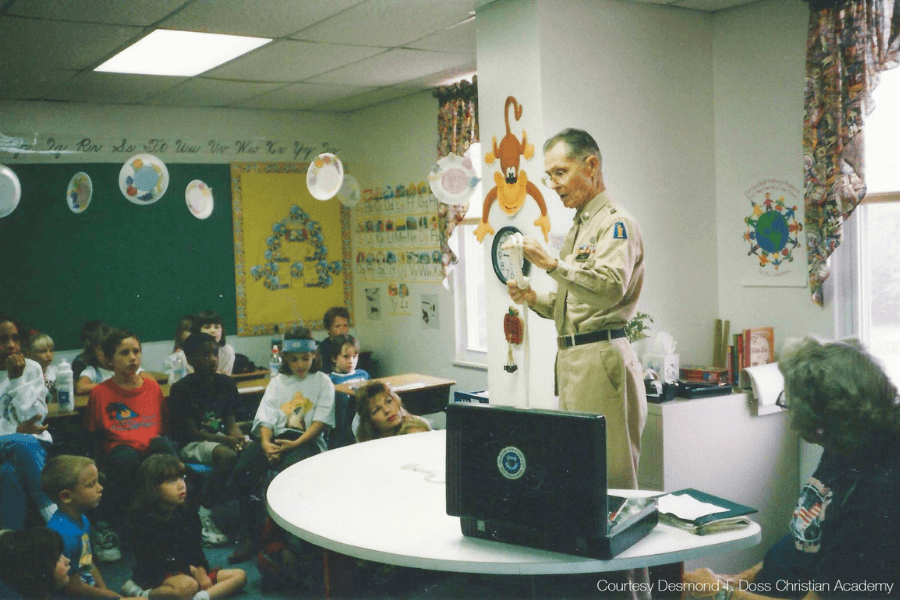
Desmond became an icon in Seventh-day Adventist circles. Basically, their Chuck Norris, but with more humility and fewer roundhouse kicks.
He was invited to speak at churches, hospitals, and conventions—usually awkwardly, often reluctantly. Being a walking miracle apparently comes with a lot of public requests.
He didn’t love the attention, but he used it to inspire, not boast. He reminded people that conviction doesn’t need a microphone—it just needs a backbone.
Doss the Human Meme Before Memes Were a Thing
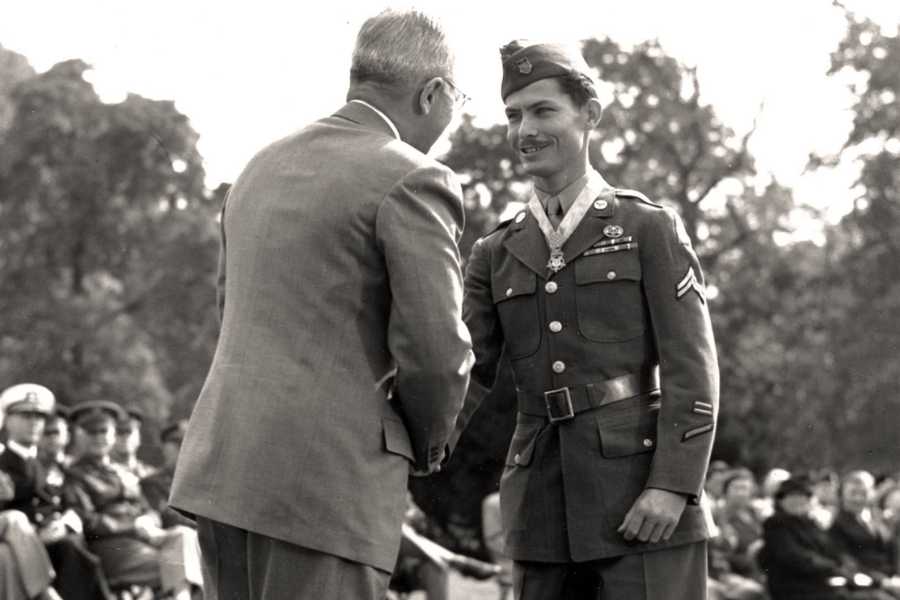
In military training today, they still use Doss as an example. “Be like Desmond.” It is like telling someone, “Just casually outperform every known survival instinct.”
Posters, documentaries, sermons—his story went everywhere. At this point, even your grandma has probably heard of him. He became an accidental celebrity with zero TikToks.
The lesson? You can change the world, save lives, and make war historians cry—all without posting a single gym selfie or firing a shot.
The Most Badass Draft-Dodger Who Didn’t Dodge the Draft
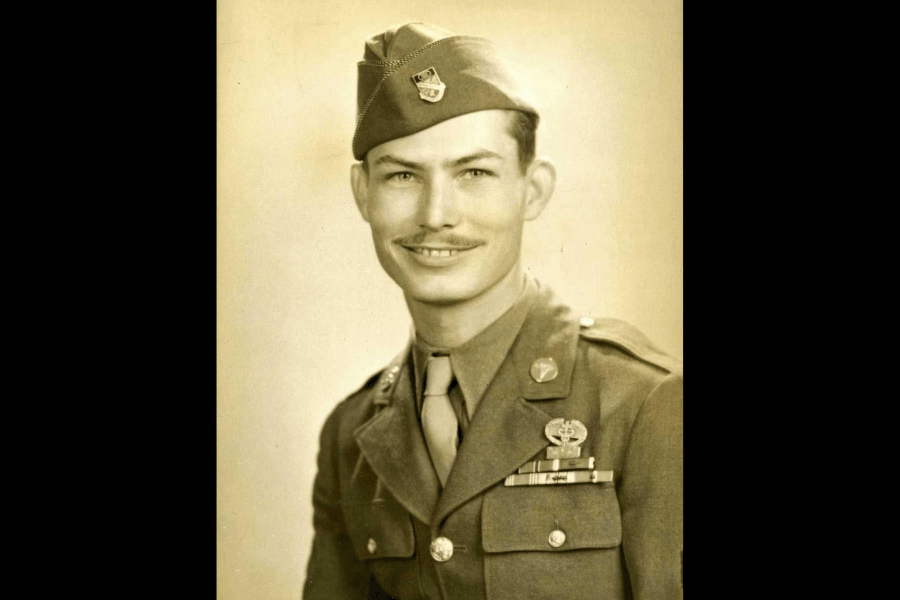
Desmond proved that you don’t need to avoid the war to stand against violence. He walked right into it—barefoot in spirit, bulletproof in faith.
He could’ve faked an injury, cited his religion as an excuse, or just vanished into Canada. Instead, he said, “Nah, I’ll go—but I’m bringing gauze.”
Somehow, this ridiculous choice led to one of the greatest stories of courage, compassion, and absolute lunacy wrapped in moral clarity the world has ever seen.
The Medal Nobody Could Question
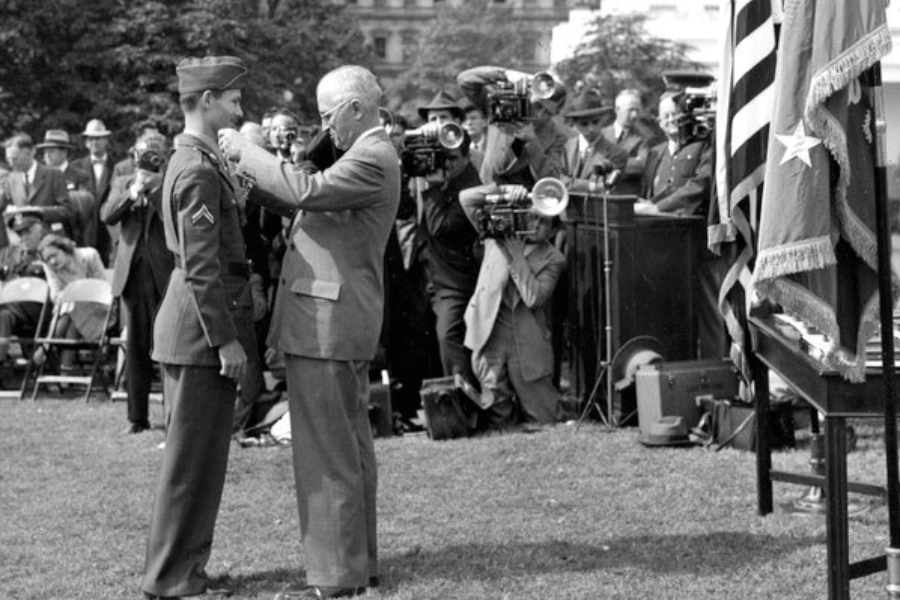
Desmond’s Medal of Honor citation read like fan fiction: “Saved 75 men… under fire… alone… unarmed.” Even Congress was like, “Wait, is this legal or just divine?”
It was the first time the government handed out a military award while quietly whispering, “We don’t deserve you.” Even the paper it was printed on felt humbled.
No one contested it. No one dared. It was the one time the military, politicians, and chaplains all nodded, “Yeah, okay, this guy wins Earth.”
Doss vs. Pop Culture Misrepresentation
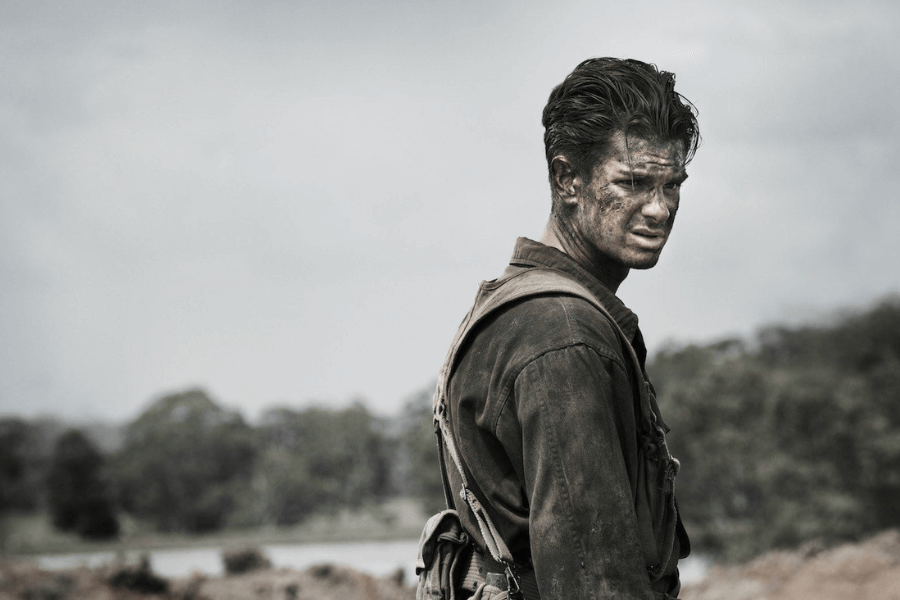
Desmond refused early offers from Hollywood because he didn’t want them to turn his story into a gun-blazing action flick, which is exactly what they wanted to do.
He wasn’t about the drama. He didn’t need slow-mo or CGI blood spurts. He had reality, which was far more impressive than any film trickery.
It wasn’t until Hacksaw Ridge stuck to the truth (mostly) that he gave the thumbs up. Even then, he probably prayed they didn’t give him abs he never had.
International Icon, Local Guy
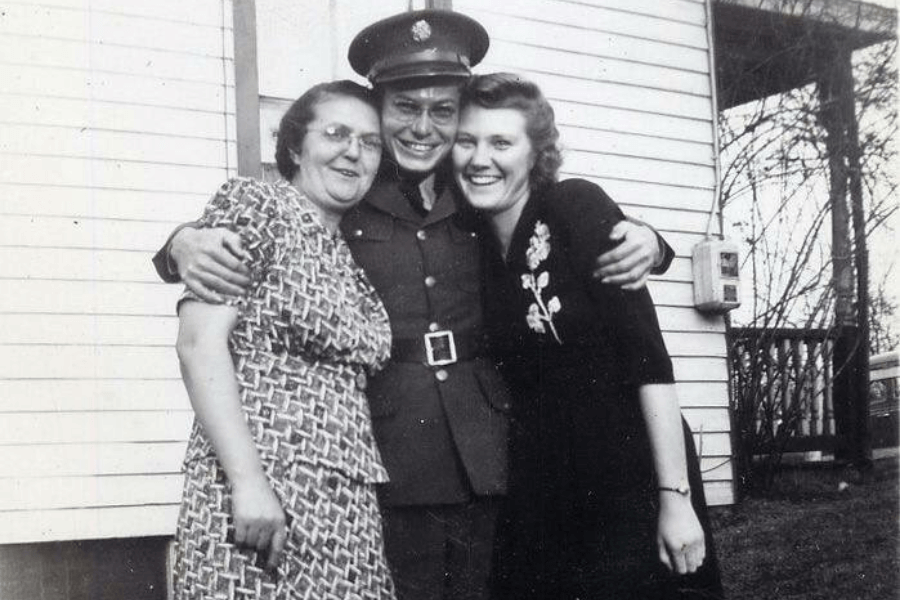
Though admired globally, Desmond stayed planted in small-town America. No villas, no Lambos—just a humble house, many thank-you cards, and probably an absurd number of get-well balloons.
He’d help neighbors with groceries, even if his body was held together by sheer will and God’s duct tape. Fame never went to his halo.
He treated fans like friends and friends like family. In short, he lived like the war hadn’t made him famous—but just more motivated to serve quietly.
Visitors Flocked. He Offered Tea.

People from all over came to visit Desmond. War buffs, soldiers, Sunday school teachers—everyone wanted a selfie with the pacifist Rambo. He offered them tea and silence.
He wasn’t a talker. You asked a big question; you got a small, thoughtful answer. No dramatic reenactments. Just that piercing, “I’ve seen things” look.
They came expecting grandeur. They were left awed by gentleness. That’s the Desmond paradox—he shook your soul by barely raising his voice.
Letters From the Saved
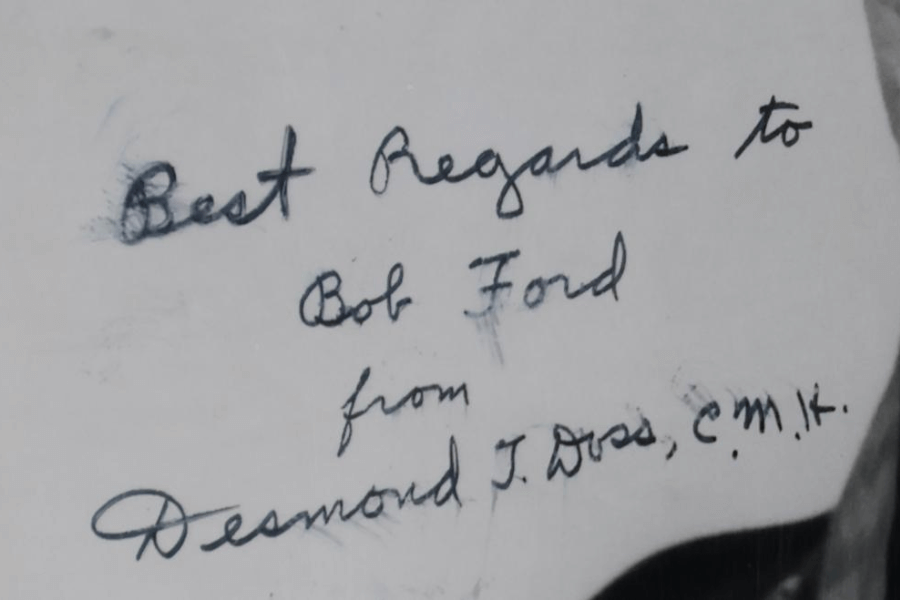
Many of the men Desmond rescued wrote to him after the war. Some sent thanks, while others just said, “You probably don’t remember me, but I definitely remember you.”
He responded to as many as he could, handwriting replies like it was 1892. Of course, he didn’t use form letters—he saved lives, not time.
These men owed him everything, and Desmond treated their gratitude like it was too much because modesty was his default setting, even in miracles.
The Army Finally Gets the Memo
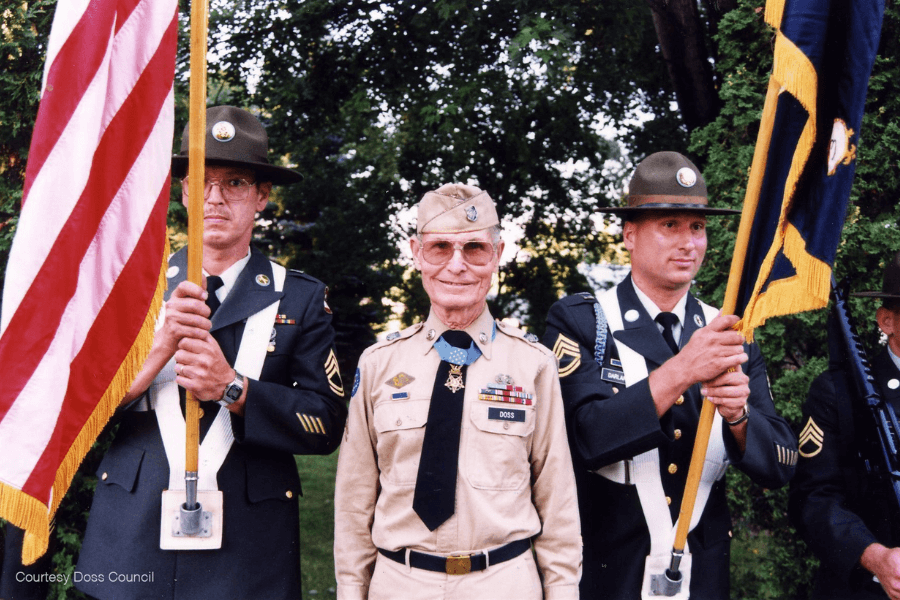
It took the Army a while, but eventually, they realized they should stop arguing with history. Desmond’s name became required reading in training manuals and ethics classes.
New recruits now learn about him like he’s the Jedi Grandmaster of medical ethics. “No gun? No problem.” That’s the Doss doctrine.
Drill sergeants shout his name during pushups, probably while praying to channel even one molecule of that rope-slinging, injury-defying kindness monster.
His Bible: The Most Well-Traveled Book
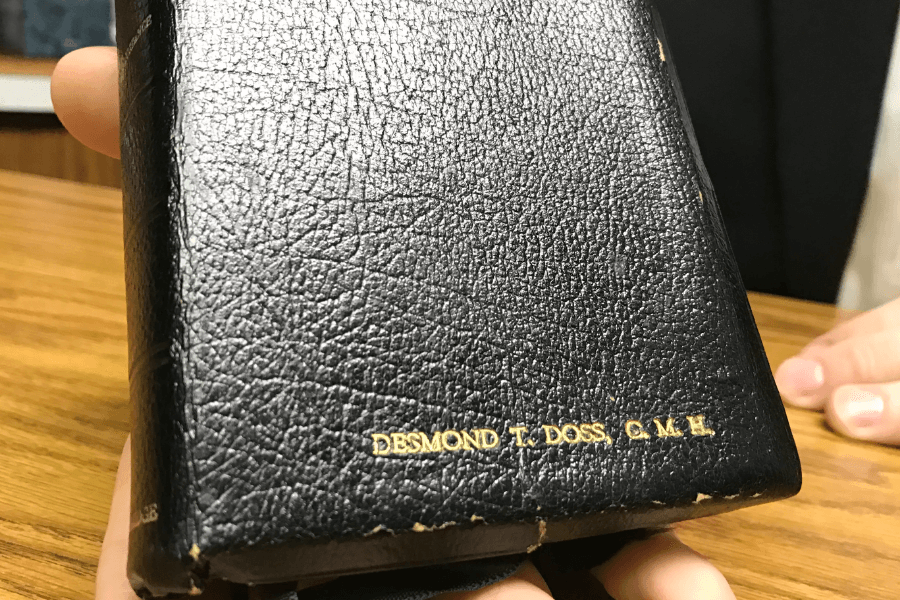
That beat-up Bible he took to war is now a historical artifact. It went to war, through explosions, over cliffs, and into his hospital bed.
He risked his life for it—literally asked medics to grab it before evacuating him. That’s love. That’s commitment. That’s also kind of adorable.
Today, it sits in a museum, radiating holiness and the faint smell of field dressings. Visitors stare at it like it might start floating. It hasn’t. Yet.
He Was Buried Like the King of Kindness
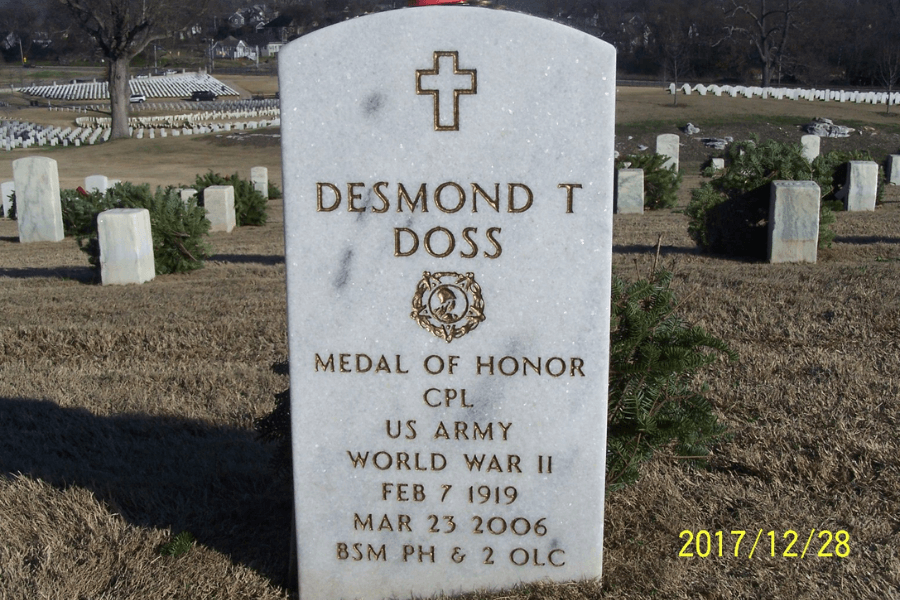
When Desmond passed in 2006, they gave him a full military burial. The irony? The man who never fired a shot left behind a bigger bang than most five-star generals.
Soldiers, pastors, historians, and strangers gathered to say goodbye. The cemetery didn’t just bury a man—they planted a legacy.
There were no fireworks. No salutes fired. Just the sound of everyone realizing they’d probably never meet anyone like him again.
Even Atheists Love Doss
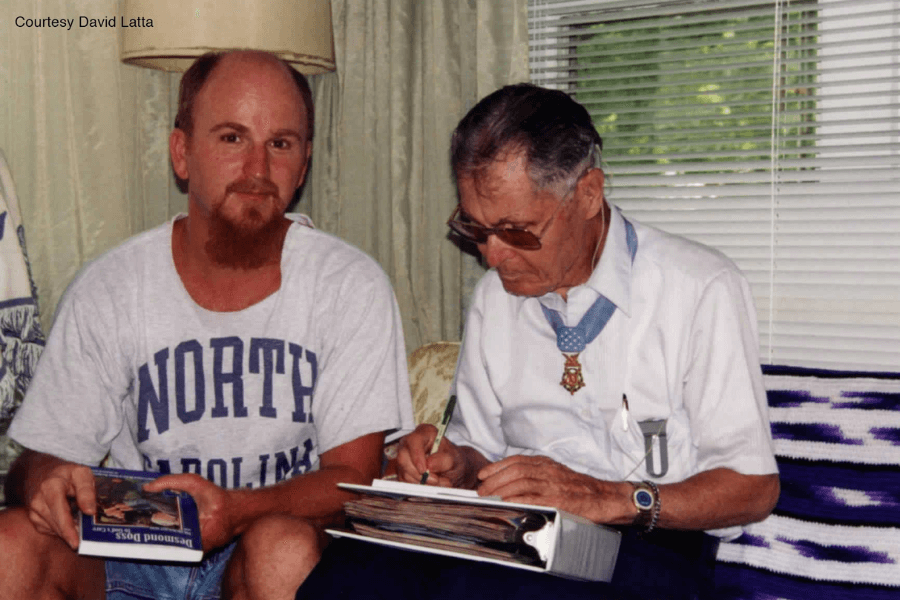
You don’t have to believe in God to believe in Desmond Doss. Even the most secular souls admit: if saints were real, this guy beat them all in a footrace.
His story crosses every line—religious, political, personal. Everyone agrees he was the kind of human being you tell your kids about when they’re whining about chores.
Pacifists, preachers, and pragmatists all claim him. Because when you survive grenades while saving people and quoting scripture, you become universal property.
Desmond Doss: Literally Built Different
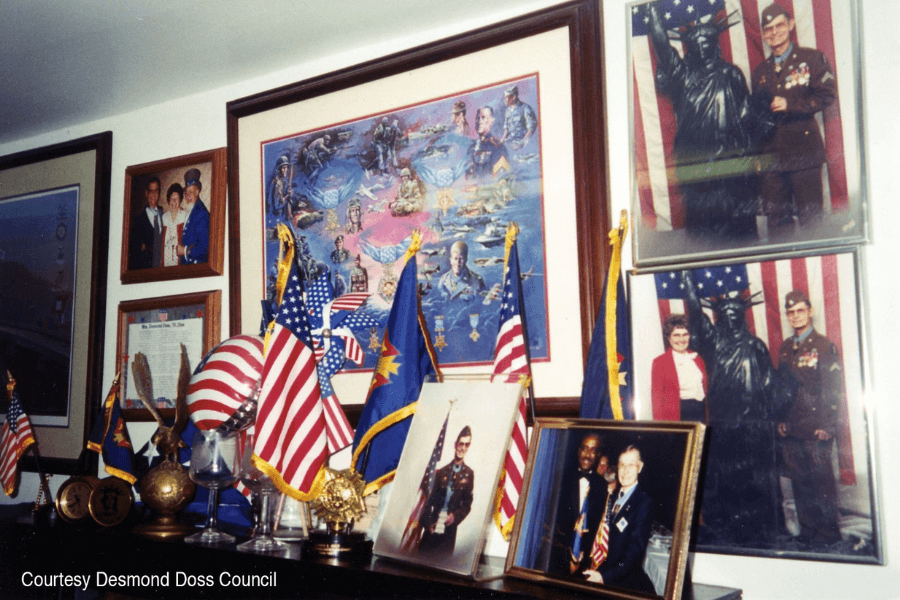
Desmond wasn’t brave despite being a pacifist—he was brave because he was one. His faith didn’t make him weak. It made him immortal in the annals of humanity.
While others won battles with firepower, he won his with compassion. And if that doesn’t deserve a statue, I don’t know what does.
He didn’t carry a rifle, but he carried the weight of everyone else. And somehow, he carried it with grace, speed, and spiritual overkill.
The Legend Goes to School (Sort Of)
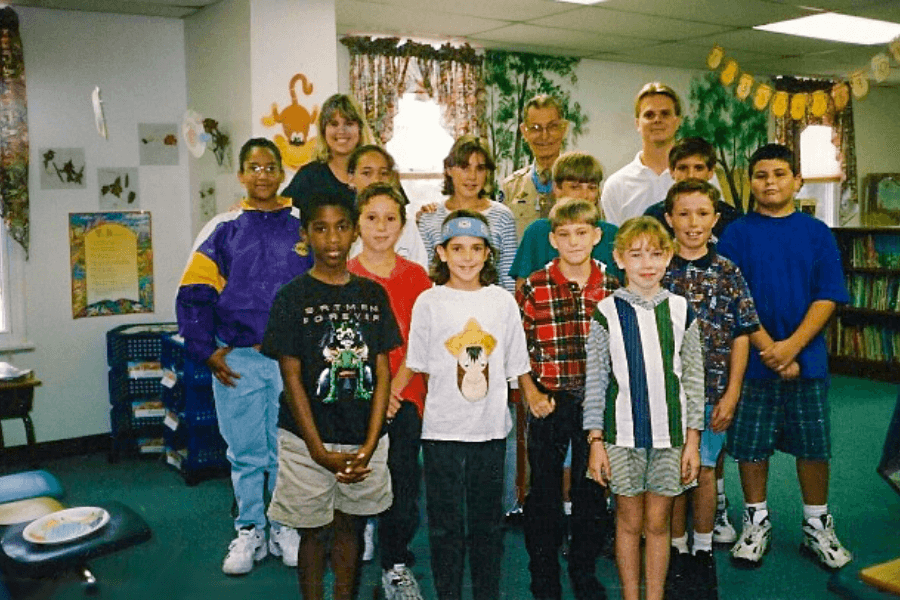
Desmond’s story became part of military training, medical ethics lectures, and possibly a few motivational TED Talks delivered by people who cry during insurance commercials.
Cadets study his tactics like he was some nonviolent Sun Tzu. “When in doubt, find rope, pray hard, and drag bodies with dramatic humility.” That’s a summary, probably.
Even in schools, kids learn about Doss—though they still ask why he didn’t “just get a gun.” Then they read more and go quiet, like tiny philosophers on juice boxes.
The Museum Game Is Strong
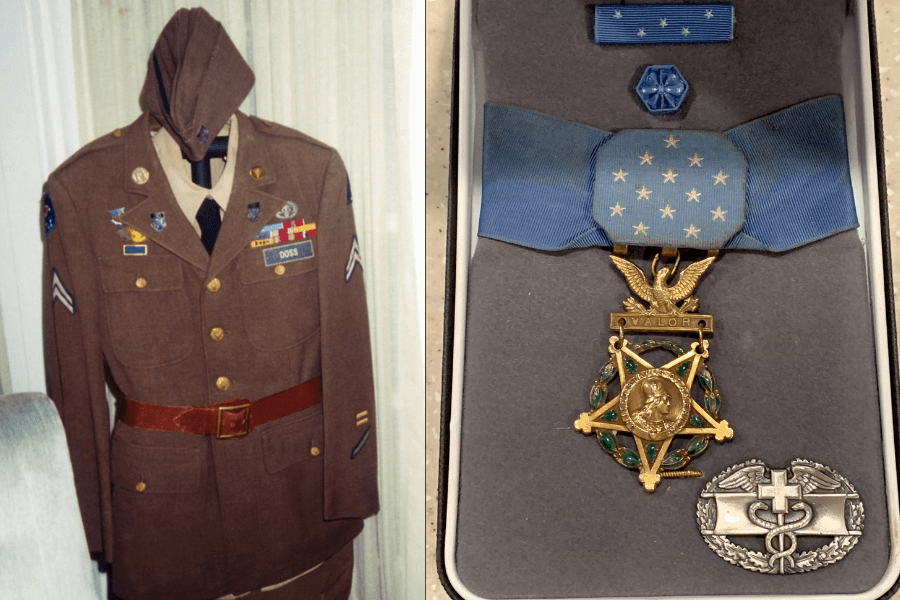
You can now visit exhibits dedicated to Desmond Doss. His helmet, his uniform, and the rope—yes, that rope—are all preserved like battlefield relics kissed by angels.
People stare at these items like sacred artifacts, which they kind of are. Somewhere between Indiana Jones’ whip and the Holy Grail, there’s Doss’ first-aid kit.
Seeing his gear in person hits different. You realize everything was basic, worn, and non-lethal, but somehow more powerful than tanks. It’s humility, shrink-wrapped in khaki.
The Soft-Spoken Titan
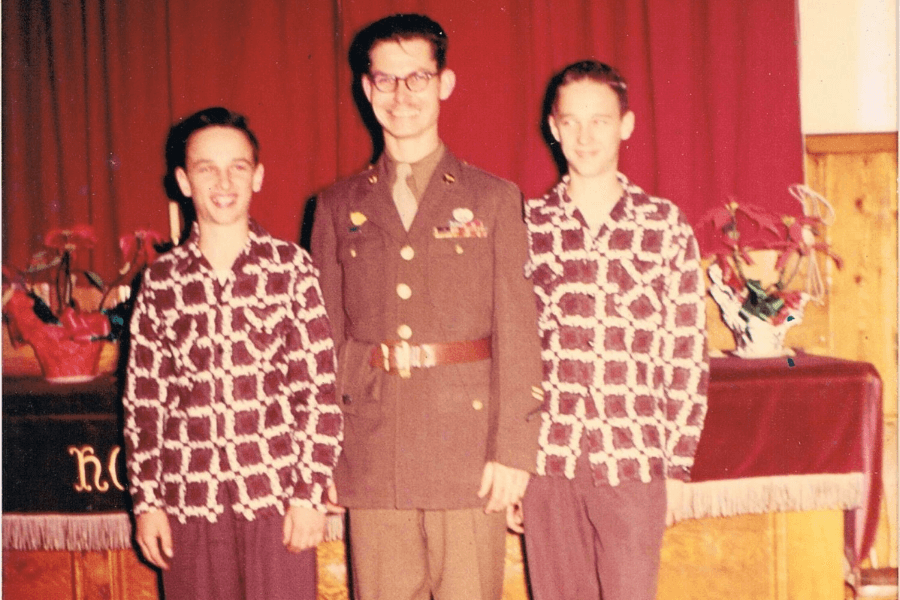
Desmond never tried to be famous, which is probably why he became a legend. In a world of shouty self-promoters, he just whispered his way into history.
He’s in documentaries, books, murals, and even memes—yep, modern sainthood comes with digital tributes and gif-worthy quotes. “Please Lord, help me get one more,” now gets retweeted with tears.
And through it all, his legacy stays clean. No scandals. No tell-alls. Just decades of unbothered nobility. Honestly, he might’ve been a Jedi. We’ll never know for sure.
What Desmond Taught the World
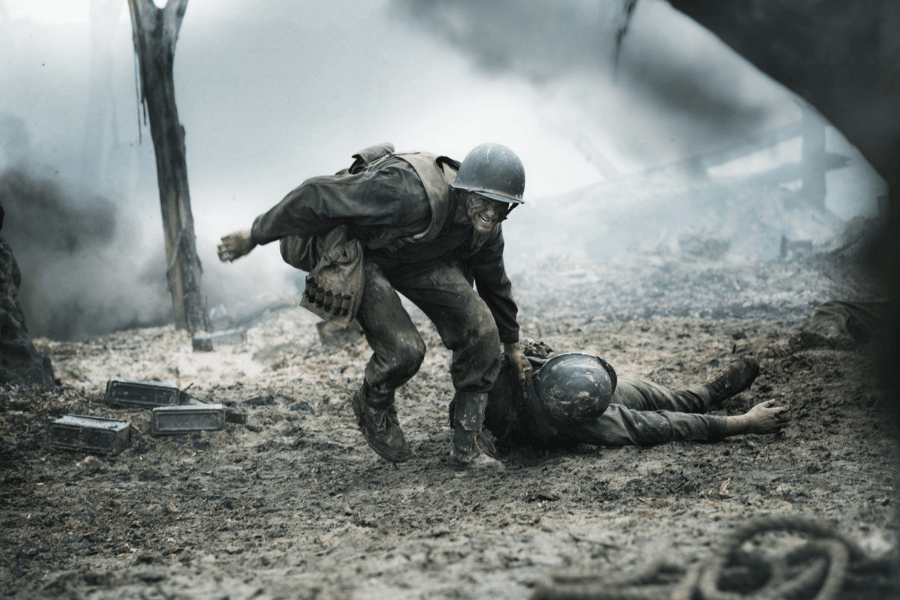
Desmond proved that moral clarity can survive literal warzones. He made kindness tactical, weaponized decency, and turned nonviolence into the most powerful act on the battlefield.
He didn’t change hearts with arguments. He did it with actions—gory, painful, exhausting ones. And somehow, he made it all look like a divine calling, not a flex.
His story reminds us that bravery isn’t about bullets—it’s about choosing others, again and again, even when your body’s on fire and your rope’s unraveling.
The Final Salute (No Gunshots, Just Goosebumps)
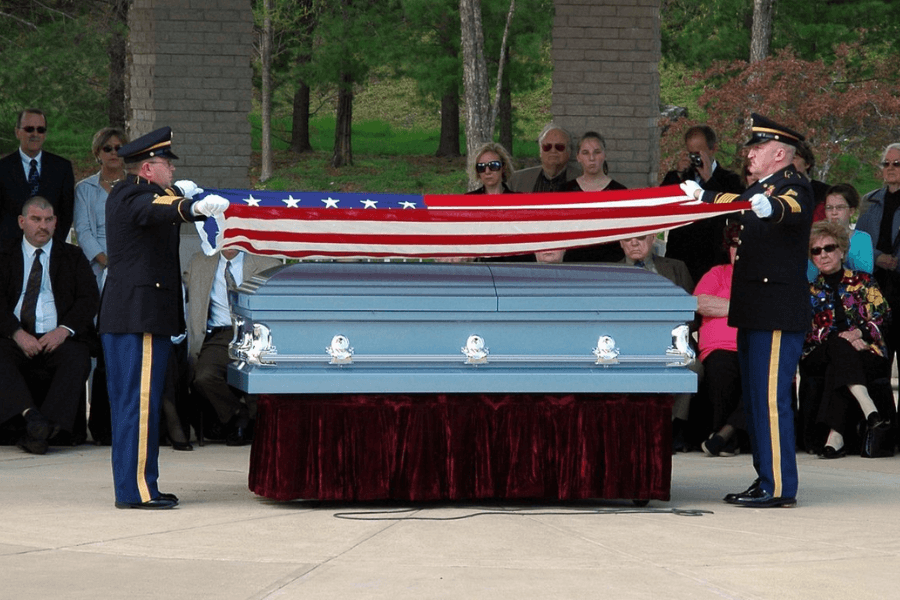
Desmond Doss died in 2006, but his story is immortal—stitched into flags, whispered in barracks, and etched into the sweaty hearts of anyone who’s ever doubted their own courage.
No monuments could fully capture his absurdly sincere greatness. But every life he touched—and saved—became its own tribute, breathing proof that goodness can be epic.
So here’s to Desmond: the unarmed warrior, the saint with bandages, the man who stood taller by kneeling to help. No rifle. No ego. Just rope, grit, and glory.

